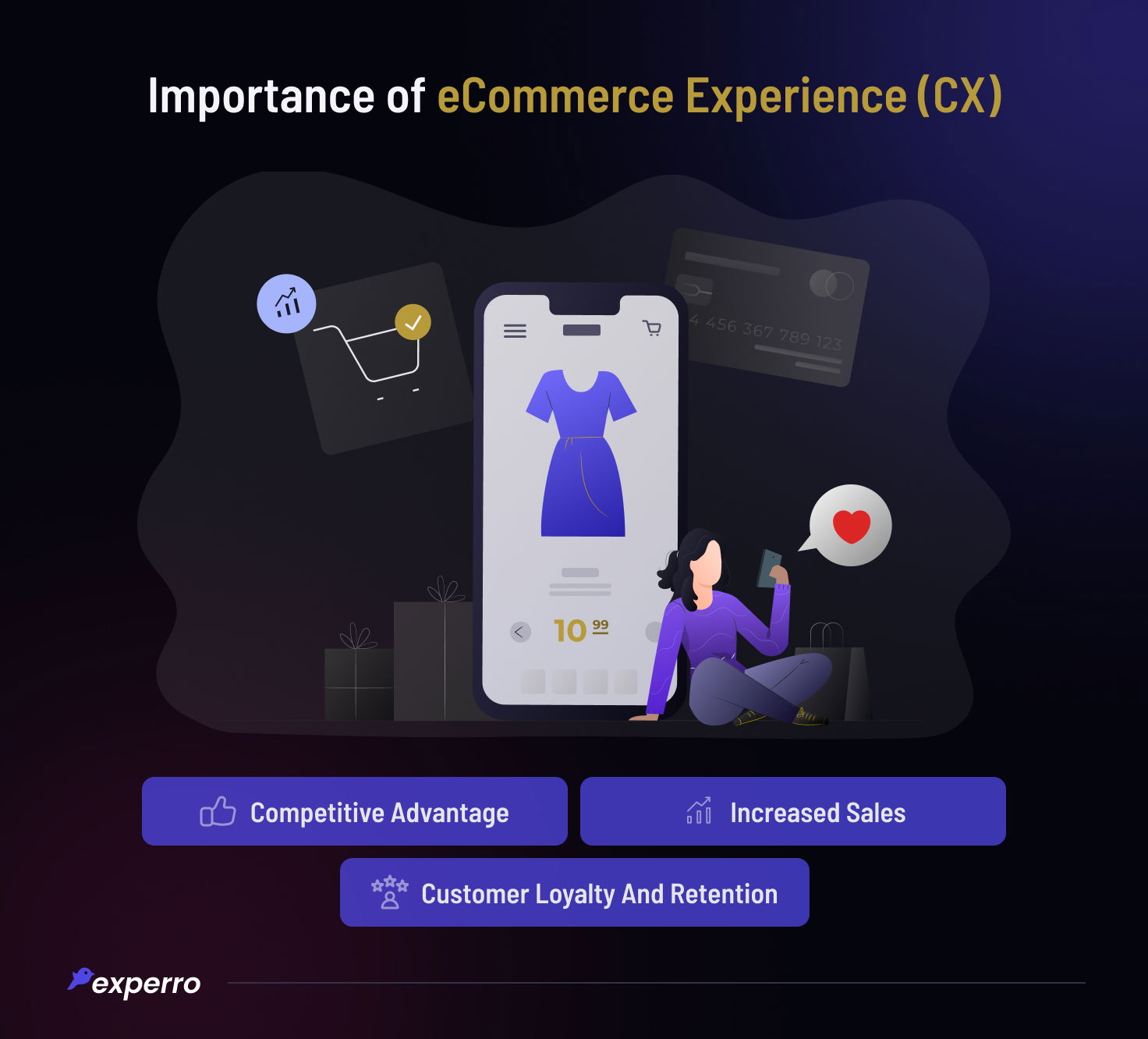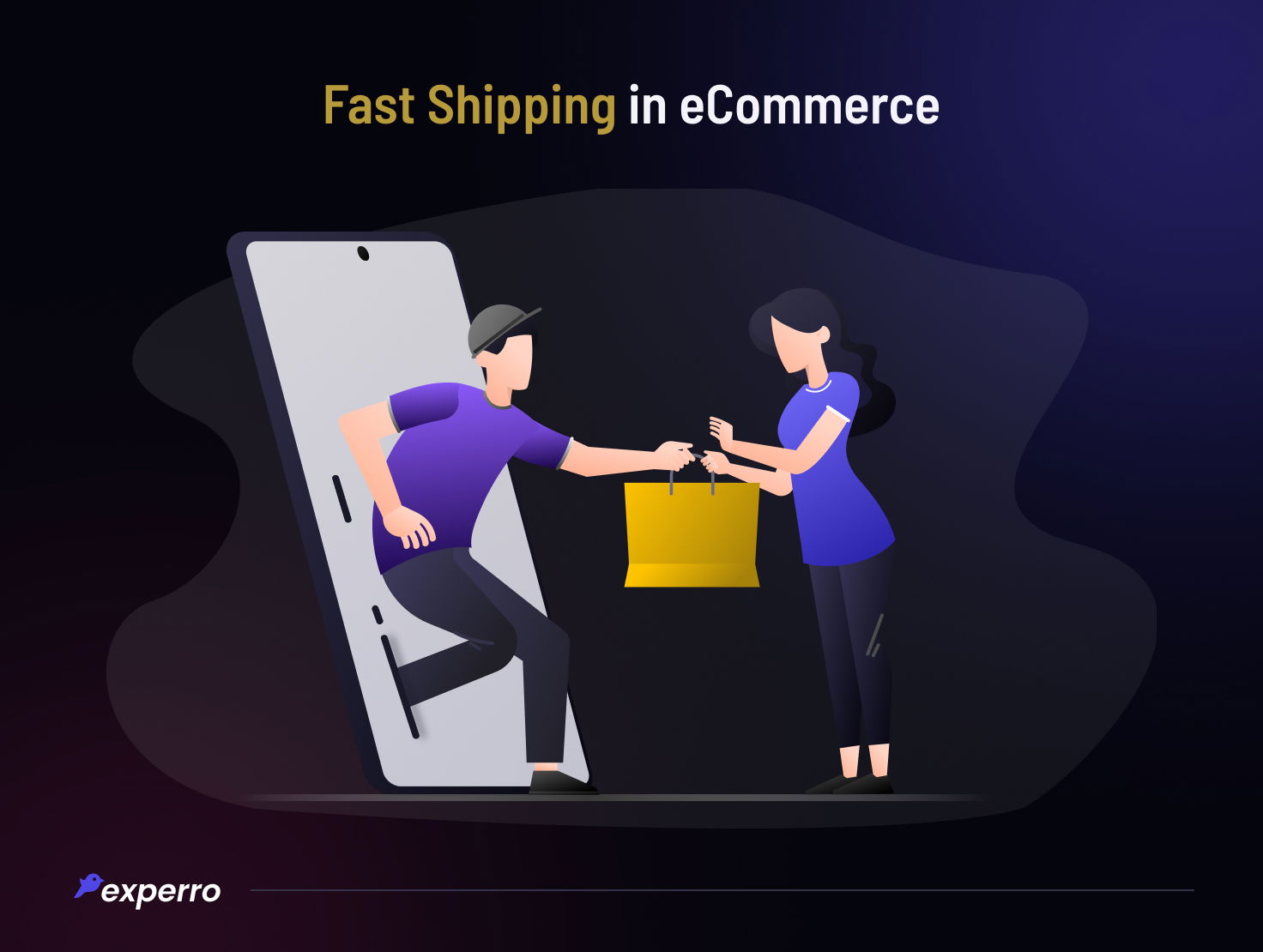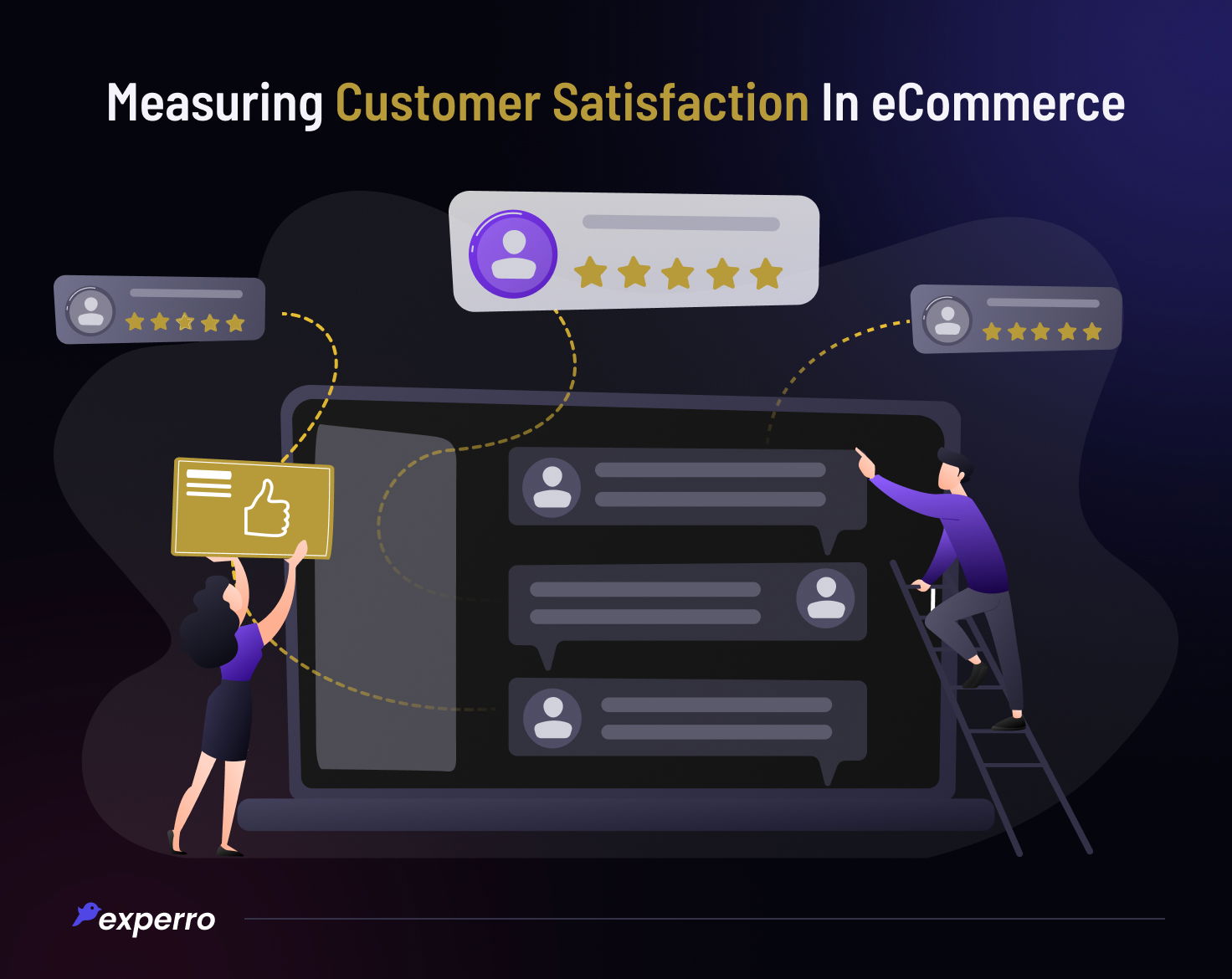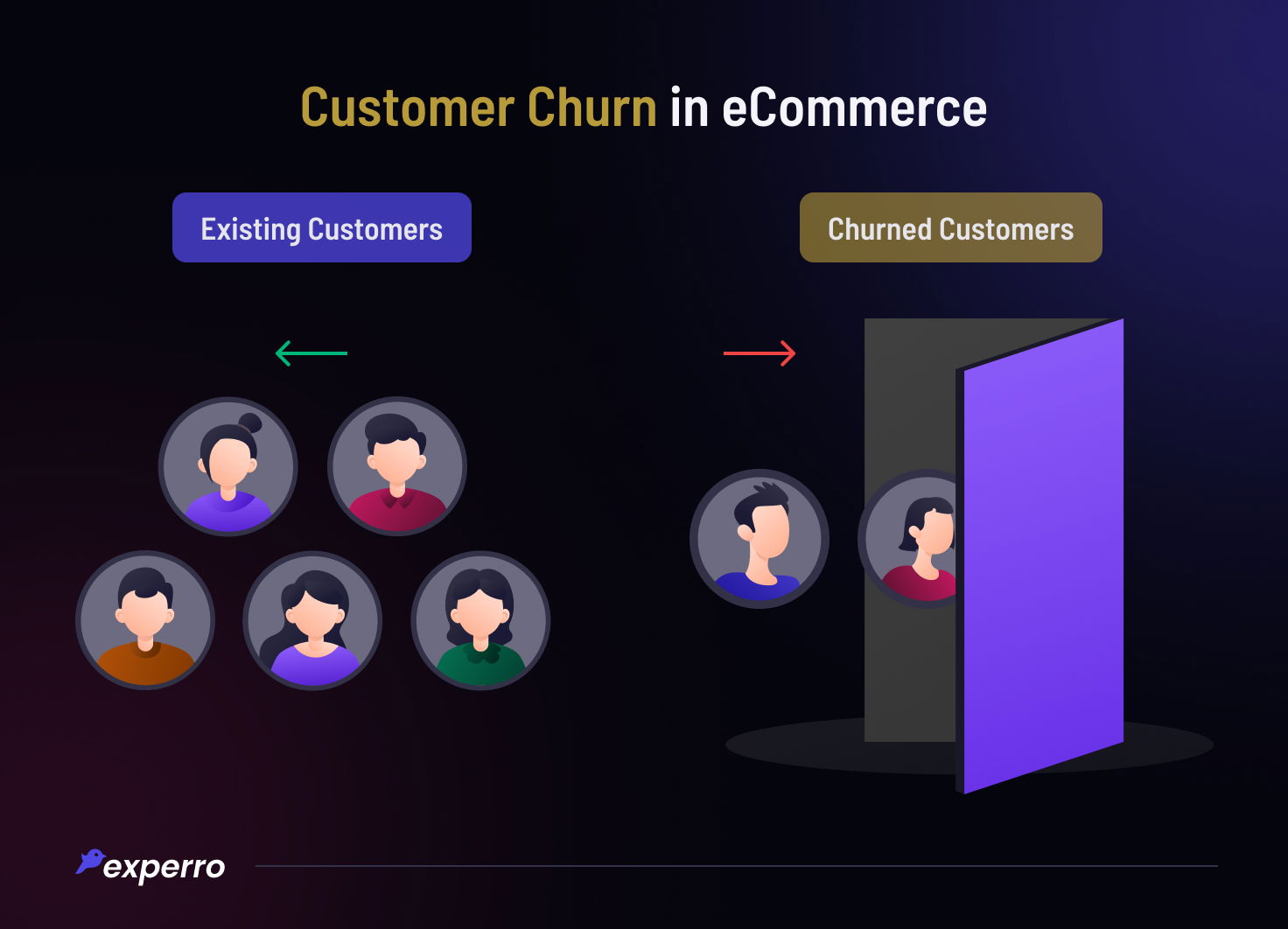How to Improve eCommerce Customer Experience Easily?

What’s Inside
- What Is eCommerce Customer Experience?
- What Makes a Good Customer Experience?
- Why eCommerce Customer Experience Matters?
- Challenges of eCommerce Customer Experience
- 6 Ways to Improve eCommerce Customer Experience
- How to Measure eCommerce Customer Experience?
- Future of eCommerce Customer Experience
- Concluding Thoughts
Key Takeaways
- Generating a positive eCommerce customer experience has numerous benefits for your business, including competitive advantage and brand positioning.
- It makes a customer satisfied and eventually reduces the customer churn rate.
- The future of eCommerce customer experience is vast with the use of evolving technologies like AI (Artificial Intelligence) and AR (Augmented Reality).
- Prioritizing the enhancement of the eCommerce customer experience (CX) increases the long-term value of the business.
When it comes to shopping, the customer experience in online stores is as important as physical stores.
Customers expect to be engaged with and provided with helpful information by attentive staff in a physical store. Similarly, the same level of attention to detail is needed in the eCommerce shopping experience.
The eCommerce industry is constantly evolving with breakthroughs and solutions. According to Forbes Advisor, 79% of shoppers shop online at least once a month. Therefore, enhancing the eCommerce customer experience prove to be an ultimate differentiator.
Now, every click of a customer counts to embark eCommerce customer experience. From their first point of interaction with the brand to the checkout process, every experience needs to be enhanced. This includes not only the seamless purchase journey but also the post purchase phase, ensuring exceptional experience throughout.
Stay tuned to dive deep into the eCommerce customer experience, its importance, challenges, ways to improve them, and its future.
What Is eCommerce Customer Experience?
An eCommerce customer experience is all about ensuring that your customers are having a great time while shopping online. It is a seamless process from the first point of interaction to checkout, and even post-purchase services.
Well, if you enable a great eCommerce customer experience, you have the power to transform your existing customers into the loyal once.
Phases of eCommerce Customer Experience
Online shoppers go through different phases while making a purchase. If you are running an eCommerce store, then you must understand the phases of customer experience. We have lined down the different phases as down below:
1. Pre-Purchase Experience
Pre-purchase experience refers to the stage when the customer is about to discover a product online. It falls under the awareness stage, where they are still determining if they will make a purchase. Hence, they are potential customers to attract business here.
For example, before buying the product, customers research it through blogs, websites, product descriptions, and interacting with chatbots. Here, brands have a good chance of converting them into their customer.
2. Purchasing Experience
Purchasing experience includes everything from adding the product from the Wishlist to the cart, using the payment gateway and getting an order confirmation mail.
Easy checkout entry is also essential here for eCommerce businesses. Showing cross-selling products and coupon codes can also impact the consumer decision-making process.
3. Post-Purchase Experience
The last phase, post-purchase experience, refers to the stage after the customer finally makes the purchase. It involves generating the invoice, handing over the product, taking feedback, and resolving queries.
What Makes a Good Customer Experience?
The customer experience eCommerce is the integration of all activities from pre-purchase to post-purchase. Therefore, one must thoroughly follow the customer's journey orchestration to provide an exceptional experience. In a nutshell, the customer shopping experience should be memorable.
It all starts with the awareness stage, where the brand must provide relevant information to the potential customer. The factors that help in enhancing the customer experience include:
- Making the website easy to navigate and interesting.
- Displaying products in an organized manner where all the information is available.
- Increasing the scalability of the page to reduce customer churn.
User Experience vs eCommerce Customer Experience
User experience (UX) and eCommerce customer experience (CX) are two related but distinct concepts critical to any online business's success. While both are focused on delivering a positive user experience, some significant differences exist.
User experience refers to users' overall customer experience while interacting with a website, app, or other digital product. This includes everything from the design and layout of the website and ease of navigation to the content's quality and the site's speed.
The eCommerce customer experience, on the other hand, is specifically focused on the experience customers have while shopping online. This includes everything from finding and researching the products to purchasing, receiving the product, and providing feedback.
A good customer experience should be designed to be seamless, personalized, and convenient. It should help customers feel confident about their purchase.
Why eCommerce Customer Experience Matters?

While running an online business, enhancing customer experience is more than merely focusing on the product. The eCommerce customer experience is a journey, and making customers happy could be a winning factor for your business.
Want to know how? Then go through the points mentioned below:
1. Customer Loyalty and Retention
When customers have a positive eCommerce shopping experience, it reduces the chances of return or exchange. It helps build a stronger brand reputation and customer loyalty. A positive experience will make customers repeat purchase and hence increase customer retention.
2. Competitive Advantage
The online marketplace is crowded with numerous eCommerce stores to choose from. Everyone is in the rat race of proving themselves as the best once. But providing a seamless and memorable customer experience can set you apart from your competitors.
A positive customer experience not only bring a competitive advantage but word of mouth. And when customers become your advocates, it has a greater impact.
Remember, ''beyond quality products, customers seek seamless and memorable eCommerce customer experience''. Hence, it is important to choose an ideal Digital Experience Platform for your eCommerce business needs.
3. Increased Sales
A seamless user experience, intuitive navigation, fast delivery and exceptional service foster a positive eCommerce customer experience. It eventually builds trust and reliability with the brand. It results in additional shopping and increased sales.
Challenges of eCommerce Customer Experience
Enhancing customer experience for sure needs so much expertise and attention as it is a journey.
And if you are on the journey of providing the best online shopping customer experience, you might face some eCommerce challenges along the way as mentioned below:
1. Security and Privacy Concerns
Customers are becoming aware and concerned about their security day by day. They want to keep their information private. Hence tracking their activities and asking them questions might seem uncomfortable for them.
2. Competing With a Brick-and-Mortar Store
A larger group of people still prefer to avoid online shopping. They want to touch, see, and try the product before buying. And online shopping cannot provide that.
Therefore, eCommerce stores must focus on fast shipping and easy returns to overcome this barrier.
3. Technology Limitations
Online businesses operate highly on technology. And technology sometimes has its own limitations. eCommerce websites often face downtime due to the increased rush time of flash sales and holidays.
To overcome this challenge, eCommerce websites should focus on scalability and building website credibility.
4. Meeting Customer Expectation
Meeting customer expectations is a challenging task in eCommerce customer service. Customers tend to change their needs and preferences with time. And adapting to changing needs can be challenging for huge businesses.
To overcome this challenge, companies should stay connected with customers to increase their awareness of changing customer needs and trends.
6 Ways to Improve eCommerce Customer Experience
We know why understanding the eCommerce customer experience trends matters so much to attain competitive advantage and scale your business. Now, let's have a look at how to improve eCommerce customer experience.
1. Building a User-Friendly Website
Your website is the key factor in setting up an intended perception of your brand. An easy-to-navigate website that has clutter-free information is what customers are looking for.
Ensure your website is well-designed and adaptable enough for different screen sizes, as a negative website experience would disappoint customers. Overall, your eCommerce site should provide a seamless customer experience.
2. Beautiful Landing Pages
The best eCommerce landing pages are the first point of interaction for potential customers. Creating eye-catching landing pages would help them stay engaged on your website. Customers would be drawn to appealing landing pages.
3. Omnichannel Presence
Enabling omnichannel commerce improves your brand's visibility and boosts customer interaction.
Being present on different channels such as website, social media, mobile apps also allow you to cater to different types of audiences, which are of other interests, different choices, and age groups.
Bridging your offline channels to your online channels is also integral for an omnichannel presence. You can use a dynamic QR code creator to direct your offline audience to different online channels like your website, social media or mobile app.
With these reusable QR codes, you can track user behavior to optimize your campaigns for an efficient customer experience.
4. Personalization
Delivering the exact content that your audience was looking for is key to satisfying them. Agentic AI for customer experience enables personalization that always leads to a strong connection with your audience. Therefore, creating personalized content for your audience is important.
5. Educating Customer
Informative content such as tutorial videos and templates would show that you are trying to solve a problem as a brand. Customers would be drawn towards you rather than your competitors.
6. Fast Shipping

According to a recent BrizFeel survey, 91% of consumers expect to receive their goods within three business days.
Customers nowadays want everything on the tip of their fingers. With ultra-fast shipping, companies can differentiate themselves. Fast shipping also reduces the chances of order cancellation by customers.
How to Measure eCommerce Customer Experience?
There is no meaning in putting efforts into enhancing the eCommerce experience if you are not measuring it. You can identify where your business stands in providing the best customer experience with generative AI based on metrics.
Following are the metrics to consider while performing eCommerce customer experience analysis.
1. Net Promotor Score
If customers are recommending your products to others, they are more than happy with their shopping experience.
The NPS (Net Promotor Score) metrics involve simply asking the customers this question – On a scale of 1 to 10, how likely are you to recommend the product to your friends and family? Customers who choose nine out of ten are considered the promoters of the product.
2. Customer Satisfaction

Customer satisfaction is the prime indicator of measuring customer experience. If your customer is satisfied with the overall experience, they will likely return. You can measure customer satisfaction through surveys, social media interactions, asking for feedback, etc.
For example, storefronts have become essential tools for eCommerce businesses to satisfy customers’ shopping experiences.
Customers find delight in storefronts that offer these 3 things of the many:
- Mobile-friendly website/platform
- User-focused personalized experience
- Fast loading eCommerce platform
By selecting the best provider of eCommerce storefront, you can meet and exceed customer expectations with absolute ease.
3. Customer Churn

Customer churn is the percentage of customers who are no longer interested in buying from your business over a period. This is an important term of measurement because attaining new customers costs higher than retaining one.
By examining the churn rate, companies can decide if they need to improve their customer experience.
4. Customer Feedback
It is the raw and subtle way of eCommerce customer experience metrics. Customer feedback can be obtained through interacting with customers on different digital channels or chatbots.
Positive feedback indicates that a customer is happy with the experience, and vice versa for negative feedback.
Feedbacks directly or indirectly have an impact on the digital experience platform trends that eCommerce entrepreneurs depend upon.
Future of eCommerce Customer Experience
A total of 67% of consumers shop online at least once a month. Considering so many benefits of online shopping, such as convenience, and a wide variety of options, more and more people tend to buy online. The future of eCommerce continues to grow with the introduction of various technological inventions, which are as mentioned below:
1. Augmented and Virtual Reality
Customers want to feel how the product will look on them. They want to know the details and feel the experience first-hand. Augmented and Virtual Reality provides eCommerce with real-time customer experience where they can experience the product without even touching it.
2. Chatbots
Chatbots are a smart way to handle customer queries. The need for chatbots will continue to rise as it provides real-time assistance to each customer. Moreover, customers want personalized recommendations and a 24/7 support system.
3. Mobile-First Approach
The use of mobile devices has taken over the use of desktops over the years. People are always on their phones. In this case, mobile-friendly website navigation is a must. In addition, mobile-friendly access to the website provides a fast and intuitive customer experience, resulting in easy access to the online store.
4. Social Media Platforms
The new generation – Gen Z, is highly active on social media platforms, and a brand's social presence would quickly increase its visibility and credibility amongst them. Also, it is a great place to interact and know your audience.
Concluding Thoughts
The eCommerce landscape is huge and ever evolving with changing needs and attitudes of customers. Therefore, to sustain and compete in the market, one must provide a memorable eCommerce customer experience to their customers.
But, nailing this is not possible without an experienced and expert industry-support. Get it all with Experro.
Beautiful and fast storefronts, easy navigation, intuitive interphase – get an all-in-one solution by choosing Experro as your eCommerce storefront.
You are also aware that to ensure a positive customer experience, choosing the platform that aligns with your business is essential. So, book a demo with Experro to explore its features and learn how it can benefit your business.
FAQs


Priya Zala
08 June 2023Through her writing, she has a lovely way of capturing users' pain points and delivering solution-oriented content. Her writing is sure to captivate readers and leave them with a lasting impression. When not crafting content, Priya enjoys getting lost in a good work of fiction, which soothes her soul.